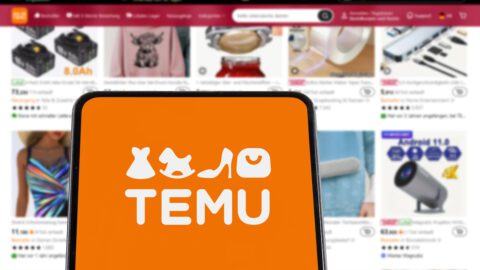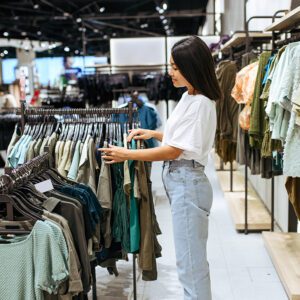Retail has always had its share of mystique. From the art of visual merchandising (VM) to the subtle science of store layout, many of the best decisions were historically guided by experience, gut instinct and the occasional stroke of genius. But today, a new era of real-time analytics – especially data drawn from fitting room activity – is demystifying the process and helping retailers understand the nuanced stories behind every “try-on” and purchase.
The modern shopper wants convenience, personalization and authenticity. For brick-and-mortar stores, this means recognizing that every time a customer steps into a fitting room, you’re getting a front-row seat to the decision-making process: not just what they bought, but what they almost bought. By capturing, analyzing and acting on real-time try-on data, retailers can craft more purposeful store designs, refine their VM strategies, empower sales associates and even inform the entire omnichannel ecosystem. Let’s unpack how.
Beyond the Sales Floor: Why Fitting Room Insights Matter
It’s tempting to celebrate total sales or overall conversion rates – who wouldn’t be thrilled to see a new product launch sell through at 75%? But what if deeper data revealed that only 9% of customers who tried that product in the fitting room went on to purchase it? That detail might spark a very different conversation.
- High Sell-Through, Low Try-On Conversion: Could your window display be attracting a narrow group of shoppers who already intended to buy, inflating sales figures while leaving casual browsers unimpressed once they try the item?
- Design vs. Size vs. Fit: If a blouse generates plenty of fitting room traffic but yields fewer sales, there may be an issue with the cut, styling or availability of certain sizes. Alternatively, the product might be placed in a high-visibility zone for the wrong demographic.
Think of fitting room data like an open mic night – while sales reports are the final applause, real-time try-on analytics let you see which jokes landed and which ones fell flat. You discover both the “why” and the “why not,” enabling you to diagnose where, how and why customers engage with specific items.
Advertisement
Balancing Creativity with Data-Driven VM
Visual merchandising relies on brand storytelling and aesthetic flair, yet data can sharpen those instincts.
- Micro-Experiments: If you suspect a casual boho top pairs best with relaxed jeans, you can group them on a mannequin and watch for any change in try-on or purchase rates. You’re not waiting a full season – just a few days or weeks – to see measurable results.
- Informing Display Layout: Real-time analytics might show that certain color palettes draw attention but fail to convert. Maybe the styling is off, or the signage doesn’t clarify the product’s features. Tweak the display, keep an eye on the data, and course-correct as needed.
- The “9% Problem” in Action: If you discover your new sweater is repeatedly tried on but sees few sales, the culprit could be anything from poor lighting to misguided size availability. A quick VM or store layout adjustment could fix what might otherwise remain a mystery.
Store Design that Anticipates Shopper Journeys
A well-designed store guides customers through curated experiences. Data ensures each pathway resonates with real-world behavior.
- Traffic Hot Spots and Dead Corners: If a back corner sees minimal fitting room requests, a quick refresh – better signage, new product groupings or a complementary seating area – can coax customers to explore.
- Occasion-Based Layouts: Sometimes it helps to think outside traditional categories. I’ve often imagined a fashion store laid out like IKEA, with themed “rooms” for work attire, weekend getaways or special events. It might sound ambitious, but the goal is to make shopping more intuitive and fun. Fitting room analytics tell you if that “Dream Vacation” section is driving try-ons – or if it’s time to rethink the theme.
- Fitting Room Optimization: Many purchasing decisions crystallize in the fitting room. By monitoring how long customers stay and whether they convert, you can justify better lighting, larger mirrors or an easier system for calling associates. Small changes can radically improve both the shopper’s comfort and sales outcomes.
Empowering Associates with Real-Time Insights
Data is only as powerful as the humans interpreting it. When store teams have fitting room insights at their fingertips, they can offer more meaningful guidance.
- On-the-Spot Recommendations: If analytics say that a certain blazer pairs seamlessly with high-rise trousers, an associate can proactively suggest that combination to a shopper. Genuine, personalized tips help differentiate in-store experiences from generic online recommendations.
- Addressing “Risk” Products: Items that see repeated try-ons but rarely sell demand a closer look. Associates, armed with the knowledge that a top runs small or features a tricky fit, can clarify details, offer alternative sizes or highlight styling tips.
- Shifting Focus to Human Connection: When technology handles the grunt work of tracking inventory and analyzing trends, store associates can concentrate on building rapport, delivering memorable service and giving customers a reason to return.
The Omnichannel Ripple Effect
In an age when online and offline often blur together, in-store try-on data can supercharge the entire brand ecosystem.
- Smarter Online Recommendations: If analytics show a patterned blouse frequently pairs with certain jeans, replicate that “complete the look” suggestion online. You’re creating a consistent narrative, whether someone is browsing in person or on their phone.
- Localized Inventory: When certain products spark high try-on rates in one region, stock up accordingly. If another style flounders elsewhere, reallocate inventory to avoid overstock. This dynamic approach keeps shelves filled with the right items and ensures a more personalized selection for local shoppers.
- Targeted Marketing Campaigns: Low conversion on a new dress might mean it needs an influencer campaign or a style tutorial. By zeroing in on these clues, retailers can craft marketing that addresses real customer hesitations, ensuring each promotional effort feels relevant and timely.
Looking Ahead: The Future of Try-On Analytics
As real-time data capabilities grow, retailers will find even more ways to combine the practical and the experiential:
- Occasion-Centric “Rooms” and Storytelling: Imagine entire sections devoted to “Wedding Season” or “Urban Escape,” (Yes, like “IKEA,”) updated regularly based on local trends. Fitting room data shows if people gravitate to those concepts – and if they ultimately buy into them.
- Supply Chain and Inventory Coordination: With heightened demand signals from fitting room analytics, your supply chain can adapt faster to local preferences. If one store’s best-selling sweater lags at another, you can shift stock accordingly and reduce markdowns.
- Humans Doing What Tech Can’t: As one colleague put it, “Let technology do what it does best, so humans can focus on what tech can’t – like creativity, empathy and brand storytelling.” With data tackling repetitive tasks, staff can devote time to building connections, delivering authentic experiences and cultivating loyal shoppers.
By leveraging real-time analytics from the fitting room – our retail open mic night – stores can make faster, bolder decisions and continuously elevate the shopper journey. The outcome is a shopping environment that feels both intuitive and personal, delighting customers with relevant options and meaningful interactions.
Matthew Cyr is the CEO and Co-founder of Crave Retail, an in-store customer engagement and analytics company recently ranked #66 on the 2024 Inc. 5000 list. Recognized as a Retail TouchPoints Design: Retail Top 40 Under 40, he has worked with major brands like Victoria’s Secret, Under Armour and River Island to enhance in-store experiences. His background includes enterprise sales at a retail tech startup, plus planning, store operations and training at Skechers. Cyr’s passion for bridging online and offline retail began at Abercrombie & Fitch and continues to fuel innovation at Crave Retail.










